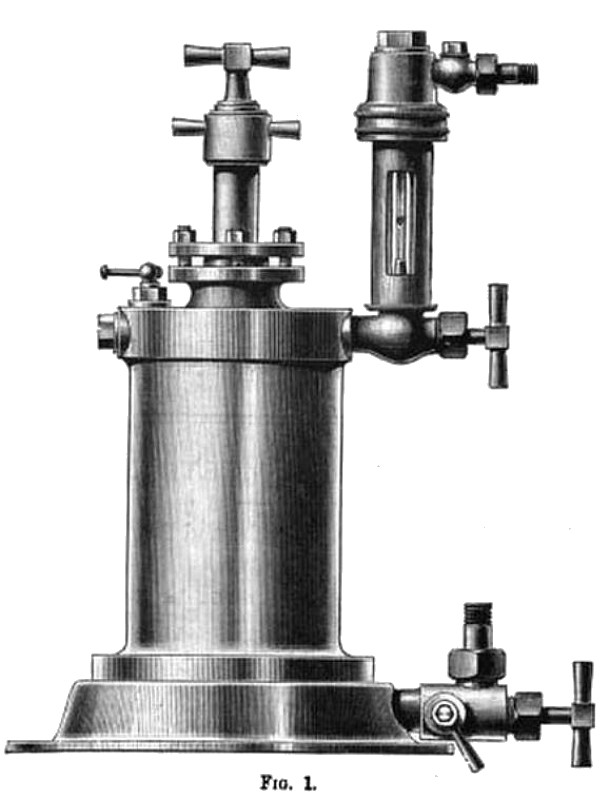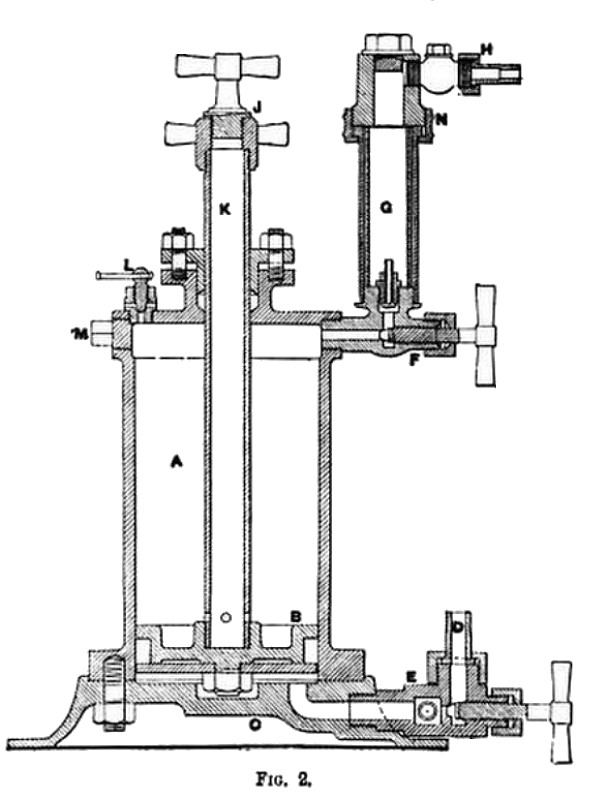|
Title: |
1888 Article-Steam Cylinder Lubricator Co., Ltd., Steam Lubricator |
|
Source: |
The Electrical Journal, V 21, 24 Aug 1888, pg. 513 |
|
Insert Date: |
1/14/2017 7:33:22 PM |
The introduction of sight-feed lubricators for steam-engine cylinders is of quite recent date, and they constitute a very great Improvement over the clumsy and wasteful oil and tallow cups which engineers were long in the habit of fixing to their engines. They enable the engineman to give a regular and visible supply of oil to the cylinder, which is of great importance for economy in Working.
Notwithstanding their advantages over the old-fashioned tallow cup, the sight-feed lubricators, as generally constructed, have several defects, which impair their usefulness. They depend for their working on the displacement principle, whereby the condensed steam from the condenser displaces a certain quantity of lubricant, according to the degree of condensation taking place.
If anything should occur to prevent condensation of the steam they fail to act, and the engineman has to resort to the tallow cup, to supply the engine with lubricant.
This want of certainty in their action is a serious drawback, and most enginemen provide for the defect by retaining the old tallow cups in case of emergency. With displacement lubricators, also, the quantity of oil which can pass through them depends on -the efficiency of the condenser, while it is often necessary to give a steam cylinder a flush of oil—as, for instance, in case of priming —which cannot be done by an ordinary sight-feed lubricator.
The lubricator shown in Fig. 1, which has lately been introduced by the Steam Cylinder Lubricator Company of Manchester, has been designed to overcome these defects, and to provide an apparatus which is automatic in its action, supplying a regular and visible feed to the cylinder, and perfectly under control. The oil is displaced, not by the accumulation of condensed steam, but by the direct pressure of live steam acting on the underside of a piston, whose surfaces are of unequal areas. The action of the lubricator is thus positive in its nature, not liable to derangement and an important feature is, that the piston-rod acts as a tell-tale, indicating the gradual consumption of the oil, and showing when it requires to be replenished.
In Fig. 2 A is the oil chamber, in which works a steam-tight piston, B, which is asbestos packed, having screwed into its top side a hollow steel piston rod, K, which works through a stuffing box. This piston rod also serves as an indicator showing the level of the oil. At the top end of the rod is a filling plug, J, through which the oil is delivered into the chamber A, the oil passing through the small holes at the bottom of the tube; D is the steam inlet, H the connection to the cylinder, G the sight feed, L an air valve, M a plug which can be unscrewed and the sight-feed G inserted, if required, at the other side, E is a run-off valve, and C is the base to which the lubricator is fixed.
The method of working is as follows:
When the piston B is at the bottom, and the chamber filled with oil, steam is admitted through the pipe D by opening the lower valve to the underside of the piston, the area of which is larger than the top side by the amount of the area of the rod K. This difference of area causes the piston to be raised within the cylinder, and so displaces the oil above, which finds its way out to the engine steam pipe or chest through the upper valve F, past the sight-feed G and connecting pipe H.
The quantity of oil displaced can be readily regulated by adjusting the outlet valve to give any desired quantity. |
|
 1888 Steam Cylinder Lubricator Co., Ltd., Steam Lubricator
1888 Steam Cylinder Lubricator Co., Ltd., Steam Lubricator
 1888 Steam Cylinder Lubricator Co., Ltd., Steam Lubricator (Sectional View)
1888 Steam Cylinder Lubricator Co., Ltd., Steam Lubricator (Sectional View)
|
|